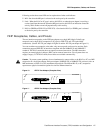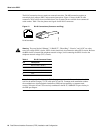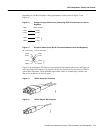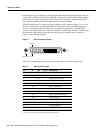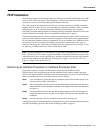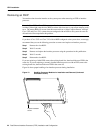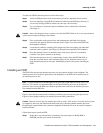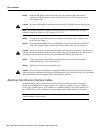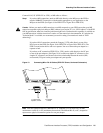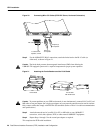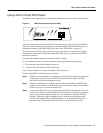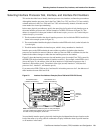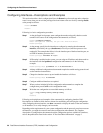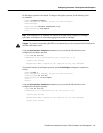
24 Fast Ethernet Interface Processor (FEIP) Installation and Configuration
FEIP Installation
Step 2 Hold the FEIP handle with one hand and place your other hand under the carrier to
support the FEIP and guide it into the slot. (See Figure 18.) Avoid touching the card or
any connector pins.
Caution To prevent ESD damage, handle interface processors by the handles and carrier edges only.
Note The processor modules are oriented horizontally in the Cisco 7010 and Cisco 7505 and
vertically in the Cisco 7000, Cisco 7507, and the Cisco 7513.
Step 3 Place the back of the FEIP in the slot and align the notch on the carrier with the groove
in the slot. (See Figure 1.)
Step 4 While keeping the FEIP parallel to the backplane, carefully slide it into the slot until the
back of the faceplate makes contact with the ejector levers, then stop. (See Figure 1b.)
Caution Always use the ejector levers when installing or removing processor modules. A module that is
partially seated in the backplane might cause the system to hang and subsequently crash, and shoving or
slamming the interface processor into the slot can damage the backplane pins and board.
Step 5 Using your thumbs, simultaneously push both ejector levers inward until the FEIP is
pushed entirely into its slot. (See Figure 1c.)
Step 6 Tighten both of the captive installation screws.
Caution To ensure proper electromagnetic interference (EMI) isolation for the chassis, make certain to
tighten the captive installation screws on each FEIP immediately after you install it and before proceeding
with the installation of each remaining FEIP or other interface processor.
Attaching Fast Ethernet Interface Cables
The MII and RJ-45 (or SC) receptacles represent two physical connection options for one port
adapter. Each FEIP has one or two port adapters. On a single port adapter, you can use either the
RJ-45 (or SC for FEIP-1FX or -2FX) connection or the MII connection. You can use the RJ-45 (or
SC for FEIP-1FX or -2FX) connection on one port adapter and the MII connection on the other.
Note RJ-45, SC, and MII cables are not available from Cisco Systems; they are available from
outside commercial cable vendors.




